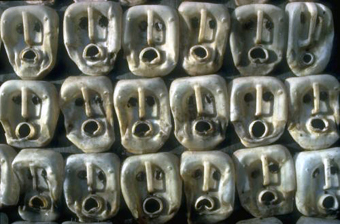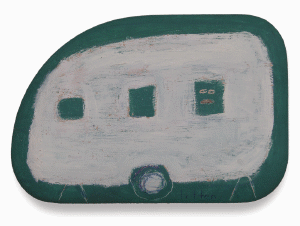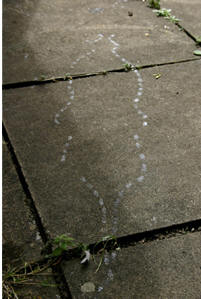|
|
| home | exhibitions | interviews | features | profiles | webprojects | archive |
|
"Art Now Cornwall ?" Joseph Clarke
As you may be aware the Tate St Ives is soon to be housing an exhibition entitled “Art Now Cornwall” representing work by a chosen few contemporary artists working in Cornwall today. It is fantastic that serious artists in Cornwall are at last being supported in this way. Contemporary artists have for some time been living in the shadow of the important and much respected heritage of their locality, without adequate recognition. Therefore it is to be applauded that this opportunity has arisen, and encouraging that there is some support for practitioners to move out of the shadows of the past, so that the chronology continues. This is confirmation of my long held belief that contemporary art in Cornwall is as vibrant and diverse as at any point in the past, and as such remains just as vital on a wider level. There are however many questions that have been raised about the implications of this exhibition. It is my passionate belief once I became aware of the show and it’s handling, that it was important that it be looked at a little closer.
It is clear that the objectives
have continually moved since the conception of the idea, with a
constantly changing stance adopted in response to expanded knowledge and
an unfortunate mounting negative response. The
For me there are many concerns:
for example why did the plans for the “Art Now” show change so much? I,
like others who are passionate about what is produced in Cornwall, have
an expectation that The Tate be fully aware of contemporary art
practices in their locality when they set out that they aim to reflect
what is happening. If they are not well enough informed, then it is a
concern I believe that all serious artists in Cornwall deserve the right to be at least considered before they are rejected from such a potentially pivotal show. Indeed this is necessary from a culturally reflective point of view. I think that it is all the more vital when the “Art Now” title alone alludes so clearly towards being culturally reflective.
I look forward to supporting the
Tate show with a complementary exhibition which aims to expand, and in
doing so, forward the momentum, and make a celebration all the more
likely. Anymoderately all-encompassing look at the art world in Cornwall
will reveal much to attract individuals, along with much to repel. I
invite visitors to make the judgement: which ‘Art Now’ My way of adding to the debate will consist of the following: I have chosen to show a limiteddisplay of diverse artists that I consider to be worthy of note, no more than that, it is not my claim that this list is conclusive or answers the question posed in the Tate’s theme. I do however make a selection in order to ask the questions: are these important artists of integrity, honesty and achievement, of equal significance in contributing to Cornwall’s artistic tapestry, as those selected by the Tate? And if so are they as much a part of Art Now Cornwall? I make the claim that there are many other artists of note outside of my gallery realms also.
To continue this point, the
second part of the exhibition will be an installation that looks at the
huge variety of artists in Cornwall. The display has taken on
suggestions from a wide range of invited and welcomed sources with the
aim of being as all-inclusive and democratic as possible and And finally there will be an area that encourages visitor feedback with regards to reaction to the subject, and indeed opportunity to add any artists that may not be present which will add to the bigger picture. All information gathered from this event will ultimately be submitted to The Tate, St Ives.
Pictures: David Kemp, Alex Smirnoff, Swiftie, Andrew Litten, Tim Shaw and Rupert White
“Art Now Cornwall ?” Goldfish Contemporary Fine Art, Penzance. From Saturday February 3rd 2007
|
|
|

 “Art
Now Cornwall?” is an interactive exhibition being held at Goldfish
Contemporary Fine Art, Penzance to complement the “Art Now Cornwall”
exhibition taking place at The Tate Gallery, St Ives. The aim of the
event is to ask questions rather than give answers, and to
“Art
Now Cornwall?” is an interactive exhibition being held at Goldfish
Contemporary Fine Art, Penzance to complement the “Art Now Cornwall”
exhibition taking place at The Tate Gallery, St Ives. The aim of the
event is to ask questions rather than give answers, and to




 cover
a multitude of viewpoints. There are sure to be literally hundreds of
artists by the time the show comes around. This will enable visitors to
look more closely at the theme and form their own judgements, and indeed
ask their own questions. It is my hope that by displaying all facets of
“Art Now Cornwall”, from all perspectives, visitors will have the
opportunity to form their own answers to some of these questions, and
see the true complexity of the theme.
cover
a multitude of viewpoints. There are sure to be literally hundreds of
artists by the time the show comes around. This will enable visitors to
look more closely at the theme and form their own judgements, and indeed
ask their own questions. It is my hope that by displaying all facets of
“Art Now Cornwall”, from all perspectives, visitors will have the
opportunity to form their own answers to some of these questions, and
see the true complexity of the theme.